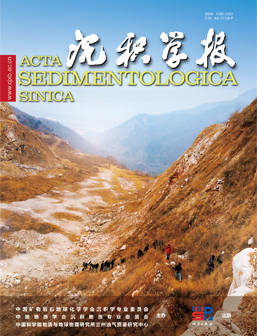Combination of morphological characteristics of pyrite and their paleoenvironmental significance in black shale: A case study from the Lower Cambrian Qiongzhusi Formation of well W207 in the Sichuan Basin
doi: 10.14027/j.issn.1000-0550.2023.123
- Received Date: 2023-10-08
- Available Online: 2023-12-12
-
Key words:
- Qiongzhusi Formation /
- black shale /
- organic matter /
- redox environment /
- pyrite morphological characteristics
Abstract: [Objective] Recently, the shale gas exploration of the Lower Cambrian Qiongzhusi Formation in the Sichuan Basin marked a significant breakthrough, which has aroused widespread attention towards the redox conditions and the organic matter enrichment mechanisms of the Qiongzhusi Formation during its sedimentary period. Redox conditions of water column play a pivotal role in controlling the enrichment of organic matter. The particle sizes and distribution of framboidal pyrites serve as powerful redox indicators. These proxies, when combined with relevant geochemical data, enable the reconstruction of the ancient oceanic redox environment. Furthermore, the assemblage of pyrite morphological characteristics may correspond to changes in redox conditions. However, a detailed comparison between the pyrite morphological characteristics and redox conditions revealed by other geochemical markers remains limited. [Methods] This study focuses on the black shale of the Lower Cambrian Qiongzhusi Formation from well W207 in the Sichuan Basin. We conducted a comprehensive analysis of the particle sizes and distribution patterns of the framboidal pyrites. Using this method, in combination with total organic carbon (TOC), total sulfur (TS), pyrite content and previously published iron speciation data, we aimed to reconstruct the paleo-marine redox environment of the Qiongzhusi Formation during its sedimentary period. On this basis, the relationship between the assemblage of pyrite morphological characteristics and redox condition changes is discussed. [Results and Discussions] The redox environmental evolution of the Qiongzhusi Formation can be divided into three stages, i.e., strongly euxinic, intermittently euxinic and dysoxic from the bottom to the top. The morphology of pyrite is abundant, mainly framboidal pyrites, accompanied by a few pyrite microcrystals and euhedral pyrites. The framboidal pyrites are generally small in size, ranging from 2.2 to 18.4 μm with an average value of 6.39 ± 1.7 μm. More than 80% of the particle sizes are in the range of 3 – 8 μm, reflecting that framboidal pyrites were mainly formed in the water bodies of the synsedimentary period. In addition, a robust positive correlation between pyrite content and TOC and TS contents was observed. Pyrite morphology varies in different redox conditions. Specifically, in euxinic environment, the pyrite content is notably high, mainly contributed by abundant framboidal pyrites. In this setting, spherulitic microcrystals are dominant, while pyrite microcrystals and well-defined euhedral pyrites with clear edges are rare. As the redox environment gradually shifted to a more oxidized state, there was a decline in both the pyrite content and the quantity of framboidal pyrites. Concurrently, the microcrystals of the framboidal pyrites evolved from octahedral to cubic forms. At this stage, the pyrite microcrystals and euhedral pyrites both increase in quantity, with the former often exhibiting aggregates and the latter featuring irregular edges. [Conclusions] In conclusion, the observed changes in redox conditions during the sedimentation of the Qiongzhusi Formation reflect a gradual oxidation process in the inner shelf areas of South China. This aligns with the rise in atmospheric oxygen level during the early Cambrian. Notably, sedimentary pyrite displays distinct variations in the distribution of particle sizes and the assemblage of pyrite morphological characteristics as a function of redox conditions. These differences can serve as valuable supplementary indicators for assessing redox conditions in subsequent studies.
| Citation: | Combination of morphological characteristics of pyrite and their paleoenvironmental significance in black shale: A case study from the Lower Cambrian Qiongzhusi Formation of well W207 in the Sichuan Basin[J]. Acta Sedimentologica Sinica. doi: 10.14027/j.issn.1000-0550.2023.123 |






 DownLoad:
DownLoad: